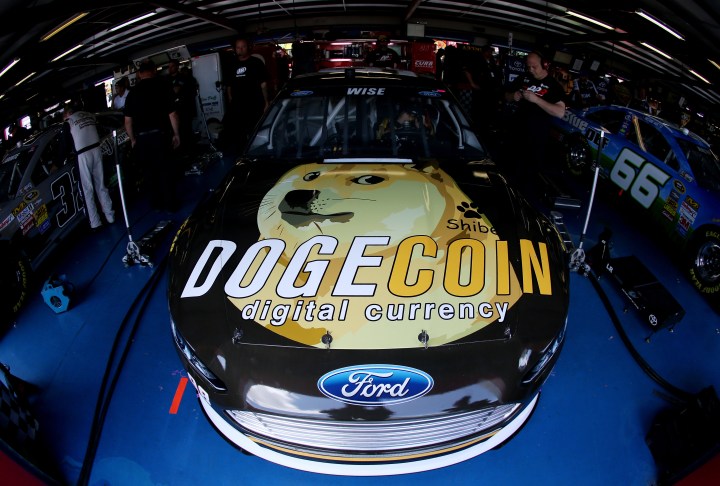
Dogecoin

Created as a joke, based on a meme, and doing far better than it should be; Dogecoin is one of the most popular currencies in the biz, despite its jovial nature. After a record setting rise soon after its launch, the coin quickly gained footing in the crypto world, and is still being mined and traded.
Garlicoin

Created by the man who brought us the world’s first Garlic Bread Dating Simulator (yes you read that right), this garlic-based cryptocoin definitely ranks high on the list of “weird internet stuff.”.
Coinye

Formerly known as Coinye West, this musician-inspired currency is now (unfortunately) abandoned. Shortly after its inception, the currency came under fire, and was targeted in a lawsuit from Mr. West’s lawyers, who claimed that the coin’s creators illegally used the hip hop star as the currency’s mascot.
Insanecoin

Based around a blockchain called “Velocity,” Insanecoin might actually be, well, insane. Currently running pretty low, the team behind the coin appears to be giving the coins away in exchange for publicity.
Unobtanium

As you may have guessed from the name, Unobtanium was intentionally designed to be difficult to get. With pre-launch announcements, and no pre-mining beforehand, Unobtanium pushed for a transparent, fair, and more rare currency, promising a cap of 250,000 coins.
Sexcoin

Yup. Sexcoin. Designed to be an alternative payment system for the adult entertainment industry, the lewd currency offers a fee-free way to pay for certain purchases and services that you would rather keep on the down-low.
Trumpcoin

Touted as a currency for “Trump Patriots,” Trumpcoin’s mission is to use the brave new world of digital currencies to make our 45th president’s dreams for America come true.
Putincoin

Like Trumpcoin, Putincoin is ridiculously patriotic, but with a more socialist flair. Rather than strictly supporting the goals and ideals of Russia’s current leader, the Putincoin’s creators built the coin to support their country, neighbors, and the planet as a whole.
FUCKTokens

The purpose of FUCK Tokens is simple and straightforward. It was created to inspire and empower everyone around the world to “give a FUCK” — literally. Whatever your cause may be, you can now support it by giving an actual fuck.
Useless Ethereum Token

Served with a heaping helping of sass, this currency is a middle finger aimed squarely at the Cryptocurrency craze. When created, the value of each token was zero, promising investors that its value would never fall, because it couldn’t. Amazingly, despite its satirical foundations, the currency still managed to earn a whopping $62,750 during its initial coin offering.
Ethereum Classic Classic

In case you haven’t noticed, there are a lot of Ethereum spin-offs — but this one may be the cheekiest of them all. After splitting off from Ethereum and founding Ethereum Classic, the creators split off again to create Ethereum Classic Classic. Ridiculous.
Venezuelan Petro

In a list full of silliness and jokes, the Petro is very serious. Announced by Venezuelan president Nicolás Maduro at the end of 2017, the currency will reportedly be backed by the nation’s reserves of oil, gasoline, gold, and diamonds. While the Petro has yet to come into circulation, its creators hope that it will alleviate the current economic turmoil that Venezuela is undergoing as the value of its currency, the Bolivar, plummets.
DentaCoin

DentaCoin is “The only cryptocurrency for dentists, by dentists.” It sounds ridiculous, but DentaCoin’s goal is pretty noble, actually. It’s intended to improve dental care worldwide by making it affordable through crowd power, as well as creating a secure, traceable system for dental care.
Cthulhu Offerings

Described literally as a ritual to the elder god Cthulhu, the OFF currency speaks of sacrifice, reward, and a strange six month long bounty gifted upon a “chosen one.” This is about as weird as it gets.



